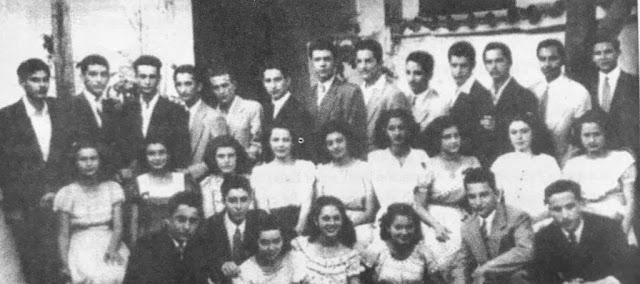In the history of Santa Cruz soccer, the founding of Blooming is a transcendental milestone. It is one of the two great clubs of Santa Cruz and one of the five great clubs of Bolivia.
Official name: Club Blooming.
Founded: May 1, 1946.
Stadium: Tahuichi Aguilera and Municipal Club Blooming.
Address: Banzer Avenue and radial 27, between 7th and 8th ring of the zone of El Remanso and Sausalito.
Nickname: Academia.
Achievements: 5 national championships, 1 cruceño championship, 5 cruceño amateur championships and 3 summer/winter cups.
International career: 7 participations in the Copa Libertadores, 5 in the Copa Sudamericana and 1 in the Copa Merconorte.
THE BIRTH
Soccer in Santa Cruz, whose activity recorded by its historians began in 1909, was institutionalized in 1917 with the founding of the Santa Cruz Football Association (later Asociación Cruceña de Fútbol-ACF), with teams of the stature and popularity of Franco and especially Florida (10 times amateur champion), which dominated eastern soccer until the mid-1940s.
It is in this context that on May 1, 1946, a group of young schoolmates from Florida (part of the Los Chabacanos troupe that they would create in 1949), who had formed the Blue Sky club, decided to found a social, sports and cultural club (a characteristic denomination of those years in the creation of all the important clubs in the country that were born before 1950) that they baptized with the name of Blooming with the light blue color as their motto, which referred to the first stanza of the Santa Cruz anthem: "Under the purest sky of America..."
The foundation took place in the Círculo de Amigos de la calle Independencia and its protagonists were: Humberto Vaca Pereyra, Humberto Olmos (who was its first president), Mario Quintela Vaca Diez, Rodolfo Castedo, Juan Carlos Velarde, Alberto Lozada Cuellar, Ángel Flores Aguilera and Roque Candia, who lived near the San Francisco church in downtown Santa Cruz.
The most widely accepted version of the origin of the name is that the illustrious historian Hernando Sanabria, consulted on the matter and with a couple of proposals from young people like Skyblue and Bloomfield, came up with the right word: Blooming, which has a very suggestive meaning: to be reborn or to bloom, to be flourishing. It was a time when Santa Cruz was a small city with modest growth. Years later, in fact, it would blossom with full force to become the thriving leading city in the country. The color chosen for the jersey could not be other than light blue with white piping on the collar, sleeve edges and pocket. The shorts were white and the socks were lead-colored.
The club's crest has maintained its shape and color since its creation. It is composed of the light blue that represents the club. The ducal crown and the cross in the center symbolize the Santa Cruz identity and its foundation in the heart of the city. The soccer ball that represents its main activity. In 2009, five stars were added, for the five national titles obtained by the institution. This is the first verse of the sky-blue club's anthem:
It is the academy that comes to win
with great skill and with great humility
it is the sky-blue one, sir... Blooming!
pride of the oriental.
It is remarkable the fact that this sports initiative was based on the own effort without receiving help from private companies or the State.



No comments:
Post a Comment